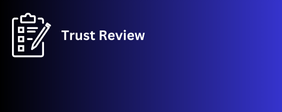In today’s data-driven world, a robust and reliable database is the bedrock of almost every successful business operation. From managing customer information to powering complex analytics, the right database can be a game-changer. However, Track key metrics like open rates, click-through rates (CTR), conversion rates, and unsubscribe rates. Use A/B testing to experiment last database with different elements (subject lines, CTAs, content) to continually improve your campaigns and increase the effectiveness of your lead generation. procuring a database is far more complex than simply buying software off the shelf. It involves a strategic evaluation of needs, a deep dive into available technologies, and a keen understanding of long-term implications.
This guide will walk you through the essential steps and considerations for effective database procurement, ensuring you make an informed decision that empowers your business for years to come.

Defining Your Needs – The Blueprint for Success
Before you even begin to look at database options, database purchase checklist you must clearly define what your organization needs. This isn’t just about listing desired features; it’s about understanding the core problems you’re trying to solve and the strategic goals you aim to achieve.
Understanding Your Data and Workload
- Data Structure and Volume: Is your data highly structured (like financial transactions) or more flexible and varied (like social media posts)? How much data do you anticipate storing now, and how much will it grow in the future? Terabytes? Petabytes?
- Data Consistency Requirements: How critical is it for your data to be immediately consistent across all systems? For financial transactions, strict ACID (Atomicity, Consistency, Isolation, Durability) compliance is non-negotiable. For a website’s content, eventual consistency might be acceptable.
- Query Patterns and Workload: Will your database primarily handle high volumes of simple read operations (e.g., retrieving fax marketing customer profiles), or will it involve complex analytical queries and frequent updates? Is it write-heavy, read-heavy, or balanced?
- Performance Needs: What are your latency and throughput requirements? How quickly do you need to retrieve and process data?
- Specialized Requirements: Do you have unique needs like time-series data (for IoT or sensor data), graph data (for relationships in social networks), or geospatial data?
Business and Operational Considerations
- Scalability: How will the database scale as your business grows? Do you need vertical scaling (more resources to a single machine) or horizontal scaling (adding more machines)?
- Integration with Existing Systems: How easily will the new database integrate with your current CRM, ERP, analytics platforms, and other business applications?
- Team Expertise and Resources: Does your internal team have the necessary skills to manage, maintain, and troubleshoot the chosen database, or will you need external support or a fully managed service?
- Budget: What is your budget for licensing, infrastructure (on-premise or cloud), maintenance, and potential training? Consider total cost of ownership (TCO) over the long term, not just initial acquisition.
- Security and Compliance: What are your data security requirements (encryption, access controls) and regulatory compliance obligations (GDPR, HIPAA, etc.)?
Exploring Database Types – Matching Needs to Solutions
With your requirements clearly defined, you can now explore the different categories of databases that might fit your needs.
